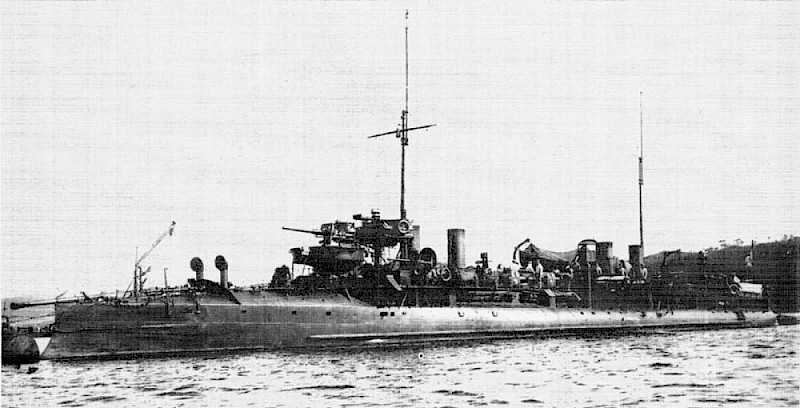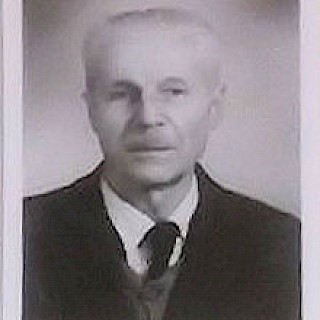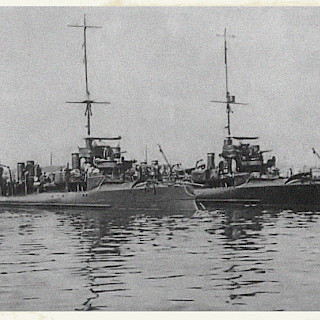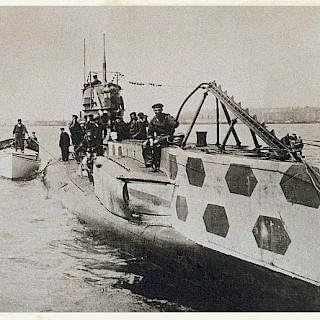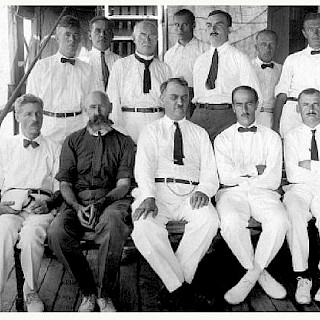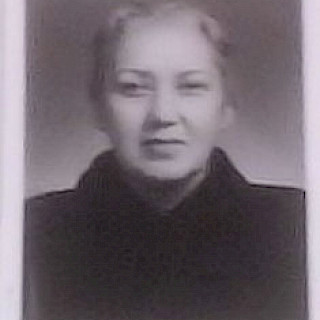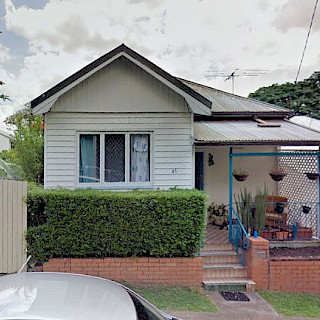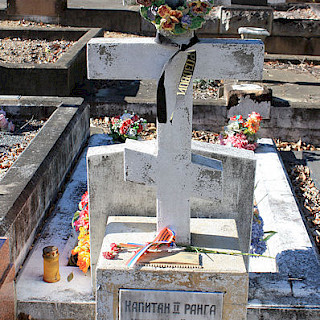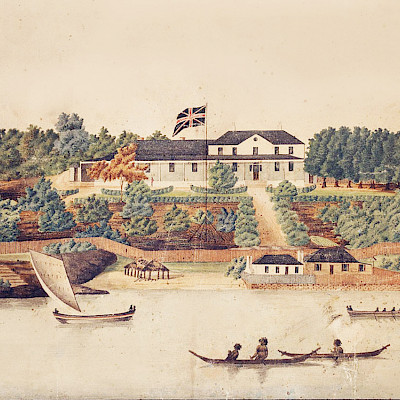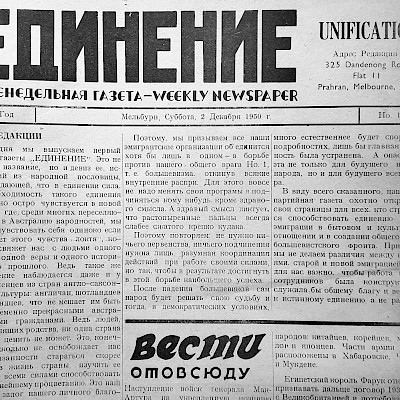On the morning of October 20th 1916, the destroyer "Stormy", under the command of Mikhail Korenev, sank a German U-56 submarine in the Barents Sea.
At the beginning of World War I almost all Russian ports in the Baltic were blocked by the enemy. Therefore, weapons, ammunition and other goods that the country purchased abroad, to supply the needs of the Russian Imperial Army, were delivered through the northern ports of Murmansk and Arkhangelsk.
However, these routes were soon paralyzed by German submarines that patrolled these waters. For example, between the North Cape (Norway) and the Kola Bay, six to eight enemy submarines were operating and they managed to torpedo and sink 14 ships in just 10 days!
By the beginning of 1916, the Russian command decided to form a military flotilla in the Arctic Ocean. Ships from other military districts began to be transferred to garrisons. Two battleships arrived from the Far East, as well as the famous cruiser “Varyag”, which Russia acquired from the Japanese. The Northern Flotilla included the destroyers “Vlastny” and “Stormy” from the Pacific Squadron, as well as mine minesweepers, icebreakers, and security vessels.
At the same time, coastal fortifications and batteries were modernized. The waters within the 12-mile zone were declared closed, and transport convoys began that autumn. Thus, we can say that this unit of the Russian Imperial Fleet became the forerunner of the Northern Navy of Russia.
On October 20th at 8:30 a.m., “Stormy”, the “Kupava” messenger ship and the T-13 minesweeper set sail. Near the island of Harno, the ships met a Russian convoy, took it under guard and lay on course. After a couple of hours observers noticed a nearby enemy submarine. It was motoring along the surface without any apparent fear of attack.
It should be noted that in addition to four 533 mm torpedo tubes, two 88-mm and one 105-mm guns were also installed on the U-56 - it could easily engage with the ship without being submerged. While the Russian destroyer had two 75-mm guns and two 381 mm torpedo launchers.
The destroyer "Stormy" was built in 1902 in France at the "Forge e Chantier" shipyard and was originally equipped with merely a couple of turret flights! After the installation of additional weapons, she became part of the Pacific Fleet and took part in the Russo-Japanese War. In January 1905, the ship was transferred to the Siberian Flotilla, and in 1916 it was sent to defend the northern sea borders.
So, even in on the surface, the U-56 was a pretty serious opponent. But captain Korenev decided to attack the submarine and sailed towards her up to six nautical cables distance (1110 meters). It seems quite strange that the U-56 bridge did not appear to notice the Russian destroyer. Perhaps the apparent carelessness of the submarine commander was due to the fact that until now the Germans had ruled these waters with impunity.
Within a few minutes, “Stormy” launched 12 shots, and the first of them hit the target. The submarine tipped aft and sank. Soon afterwards, other ships confirmed that they saw a huge oil stain on the surface of the water.
Despite the fact that this sea battle was on the surface, U-56 was the first and only enemy submarine that our sailors sunk during the First World War. However, in just a couple of years, the destroyer’s exploits were forgotten for well-known reasons, and the name of its commander will perhaps only be known to fleet historians for many years to come.
The fate of the “Stormy” was quite sad. In February 1917, she went for repairs to England and was requisitioned by the authorities. Then the British government transferred it to the White Army. Some historians claim that the ship ended up in Bizerte and was sold to the French in 1924, while others are inclined to believe that, in the end, it was still with the British and was scrapped.
But back to our captain. Mikhail Mikhailovich Korenev was born on January 29, 1886 in the ancient Russian city of Yaroslavl. In 1907 he graduated from the Naval Corps with a naval midshipman qualification, and a year later he became midshipman. For distinctions in service in 1911, he was awarded the rank of lieutenant.
He commanded the destroyers of the Siberian Flotilla,” Statny” (1913), “Vlastny” (1914), and at the beginning of 1916 he was appointed to the “Stormy”. For the military transition from Vladivostok to the North, he was awarded the Order of St. Vladimir of the fourth degree with swords and a bow, and for courage and bravery in the battle with the U-56 he was awarded the rank of Senior Lieutenant.
Shortly before the February Revolution of 1917, Mikhail Mikhailovich was transferred to the “Pechenga” messenger ship. In the Civil war, he fought in the White Forces of the Eastern Front in the Siberian Flotilla, was commander of the “Yakut” messenger ship and the “Diomid” gunboat and became captain of the 2nd rank.
In 1922, as part of Rear Admiral George Karlovich Stark's squadron, he sailed to the Philippines and ended up in a refugee camp, in the Olongapo region on the island. After the dissolution of the personnel, he left for Shanghai, where he served on the steamship, “Penza”, of the Voluntary Fleet and later moved to Dairen (Dalian) and worked as a navigator.
This city was built by the Russians at the end of the 19th century on a section of the railway connecting Port Arthur and Harbin, when the CER and its shipping company were opened. After the Russo-Japanese War, Dairen fell into the hands of the Japanese and was liberated by the Red Army in August 1945. In 1950 the government of the Soviet Union transferred Dairen to China.
In Dairen, an elderly captain met his new love - his future wife - Agnes Prokofievna Vachtel (nee Khabaroff), a dressmaker, who was born in Nagasaki on January 23th 1898. On April 20th 1950 their marriage was officially registered at the Consulate of the USSR. In these years, a mass departure of Russians from China began, as they feared persecution by the Communists. Apparently, at that time Mikhail Mikhailovich lost his job - in his emigration documents the column “occupation” is marked as “unemployed”.
In 1957, the Korenevs moved to Hong Kong, rented a room at the Shamrock hotel in the Kowloon district (in the late 60s the district would become one of the most vicious places in this city and the famous triad criminal quarter), where an Australian visa was waiting for them - the sister of Agnes Prokofievna, Lydia Veriga, lived with her children in Brisbane.
At the end of October 1957, Mikhail Mikhailovich and his wife safely reached Australia on the “Anking” steamboat transporting emigrants under an agreement with UNRO (renamed IRO - International Refugee Organization). At first, the family lived in his sister-in-law's house on Copeland Street in the Milton area. Unfortunately, nothing more is known about this period of their life, except that Korenev received a small pension.
The captain died on October 13, 1961 at the age of 75. The former military chaplain and rector of St. Nicholas Cathedral in Brisbane, Valentin Antonieff, officiated at the funeral service for the sailor. Agnes Prokofievna died in 1970 at the age of 72. The spouses are both buried in the same grave in the Toowong cemetery.
Perhaps in the years to come, the date of the creation of the Northern Navy of Russia will begin to be considered 1916 (and not 1933), when the ships of the Flotilla of the Arctic Ocean came to the defence of these borders. I would like to hope that someday the name of Captain Korenev will be included in the lists of Heroes of the Motherland, along with our other famous sailors.
Victoria SMOLIN
Thank you to Commonwealth of Military Historians the “Dagger” and K. Kositcin for their help in finding materials and Keith Clark (the Grandson of Agnes Prokofievna Korenev, nee Khabaroff) for the English translation of this article.
Photo captions:
001 - Mikhail Mikhailovich Korenev (1886-1961)
002 - "Vlastny" and "Stormy" before moving to the North
003 - U-56 in the harbour of one of the Spanish ports
004 - Officers of the Stark’s squadron (M. Korenev is sitting on the left)
005 - Agnes Prokofievna Vachtel (1898-1970)
006 - House in Milton, where the couple lived after their arrival
007 - Grave of the Korenevs at Toowong Cemetery
Photos: 007 - V. Smolin; 004 - CMH "Dagger"; 001 and 005 - K. Kositcin; 002, 003 and 006 - from open sources on the Internet.



